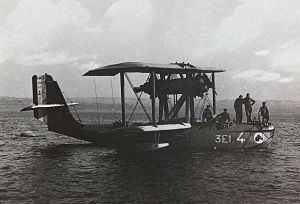Top speed 200 km/h Length 14 m | Wingspan 20 m Designer Maurice Hurel | |
 | ||
Manufacturer | ||
The CAMS 51 was a transport flying boat built in France in the mid-1920s. Designed as a private venture by Chantiers Aéro-Maritimes de la Seine (CAMS), it was a conventional biplane with two radial engines mounted in a tractor-pusher installation in the interplane gap. One example (the 51C) was sold to Aéropostale, which used it for tests in preparation for transatlantic services. CAMS also built a militarised version as the 51R3 in the hopes of interesting the French Navy in it as a reconnaissance aircraft, but no order was forthcoming. A final aircraft was built as a record-breaking machine originally designated 51-3 R that broke the world payload-to-altitude record on 18 August 1927 by lifting 2,000 kg to 4,684 m (15,368 ft). This aircraft was later used as a pathfinder for French airmail routes to South America.
Contents
Operators
Specifications (51C)
General characteristics
Performance
